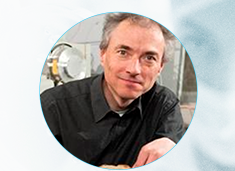 Palestrante:Michael Gänzle - Professor of University of Aberta
Palestrante:Michael Gänzle - Professor of University of Aberta
Data: 24 de novembro
Horário: 16h00
Resumo da palestra: Comparative genomic analysis of lactobacilli (Lactobacillaceae) that were conducted since 2015 demonstrated that the phylogeny of lactobacilli is closely linked to their physiology, ecology and metabolism. A vast majority of isolates from traditional sourdoughs that are used by bakeries as sole leavening agent, and of isolates from industrial sourdoughs that are used in small or large bakeries for dough acidification is assigned only to few genera, i.e. Lactobacillus, Fructilactobacillus, and Limosilactobacillus. In addition to this “core sourdough microbiome”, species of more than 18 additional genera in the Lactobacillaceae are frequently or occasionally isolated from sourdough. The current use of sourdough in baking applications, however, extends well past the traditional schemes and increasingly includes novel processes that are inoculated with specific starter cultures that are selected for specific metabolic properties. Therefore, the entire metabolic potential of lactobacilli can be exploited for sourdough fermentations. This presentation will explore on which of the metabolic traits of lactobacilli that impact bread quality show a distribution that links to the phylogeny of lactobacilli, or to their ecology or “lifestyle”. Examples include primary carbohydrate metabolism and the formation of organic acids but also enzymes contributing to exopolysaccharide formation, the generation of taste active compounds, or the metabolism of phenolic acids. Because many of these metabolic traits closely link to phylogeny and / or lifestyle, the phylogenetic position and the ecology or “lifestyle” of lactobacilli in combination with comparative genomic analyses can be used as an important preliminary criterion to select functional starter cultures for specific applications.


